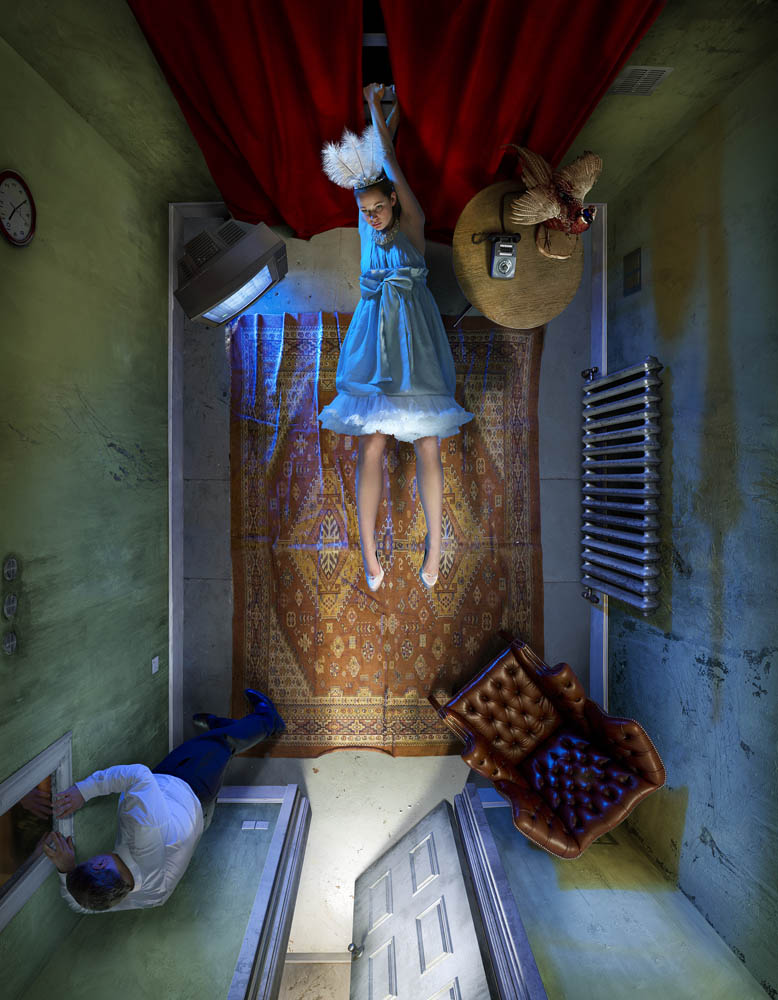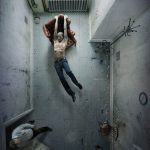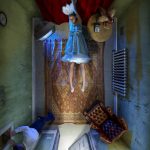-

Inversion
Limited edition Lambda print; sizes vary.
I was interested to make an image about feelings of alienation. Alienation from society but also estrangement from the ways we attempt to describe and understand the world. In a sense it is about the disjuncture between how we understand the world to be, and the actual lived experience of encountering it.
In particular, I was interested to make a picture that played with the structures of knowledge that photography is particularly associated: objectivity; instantaneous factual information; monocular vision; classical space; and single point perspective, and then to disrupt those conventions in order to emphasise their limits.
I thought that by positioning the camera on the ceiling I could mock its objective status and satirise the idea of it providing a ‘God’s Eye view’. This aerial viewpoint suggested ways of seeing that are thought of as objective views on the world, like maps, surveillance, and satellite imagery. Also, by placing the camera on the ceiling it literally removed it from my hands, and distanced the sense of authorship. I was interested to make a picture that seemed to be literally a disembodied view on the world, free of human intervention, and yet was, in fact, a completely hand made fabrication.
I emphasised the rhetoric of objectivity in the image so that I could then undermine it through the use of the hanging figures that break the internal rules of the picture. But also it suggests the inevitable affect of alienation on those who fall outside the dominant power structures that form our understanding of the world. So rather than it end up being a dry study about theoretical notions I also wanted it to be a powerful image of alienation that worked on an emotional and physical level.
-

Inversion
Limited edition Lambda print; sizes vary.
I was interested to make an image about feelings of alienation. Alienation from society but also estrangement from the ways we attempt to describe and understand the world. In a sense it is about the disjuncture between how we understand the world to be, and the actual lived experience of encountering it.
In particular, I was interested to make a picture that played with the structures of knowledge that photography is particularly associated: objectivity; instantaneous factual information; monocular vision; classical space; and single point perspective, and then to disrupt those conventions in order to emphasise their limits.
I thought that by positioning the camera on the ceiling I could mock its objective status and satirise the idea of it providing a ‘God’s Eye view’. This aerial viewpoint suggested ways of seeing that are thought of as objective views on the world, like maps, surveillance, and satellite imagery. Also, by placing the camera on the ceiling it literally removed it from my hands, and distanced the sense of authorship. I was interested to make a picture that seemed to be literally a disembodied view on the world, free of human intervention, and yet was, in fact, a completely hand made fabrication.
I emphasised the rhetoric of objectivity in the image so that I could then undermine it through the use of the hanging figures that break the internal rules of the picture. But also it suggests the inevitable affect of alienation on those who fall outside the dominant power structures that form our understanding of the world. So rather than it end up being a dry study about theoretical notions I also wanted it to be a powerful image of alienation that worked on an emotional and physical level.


